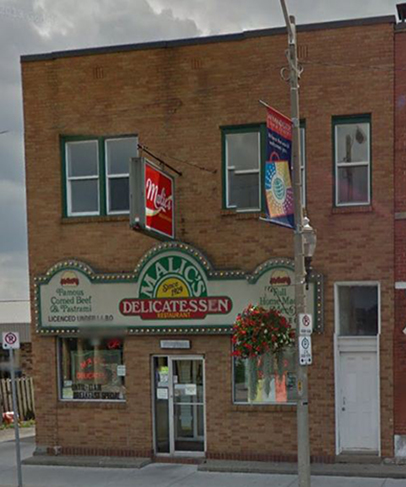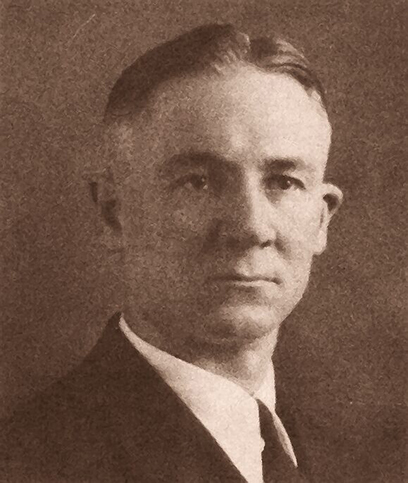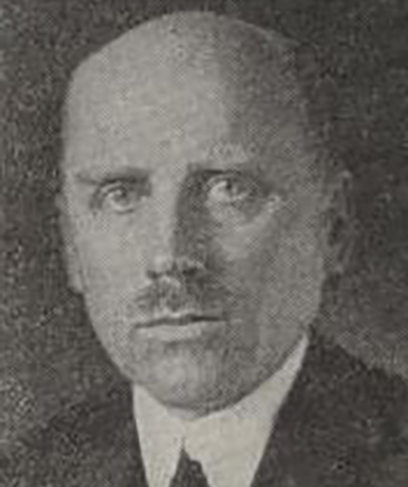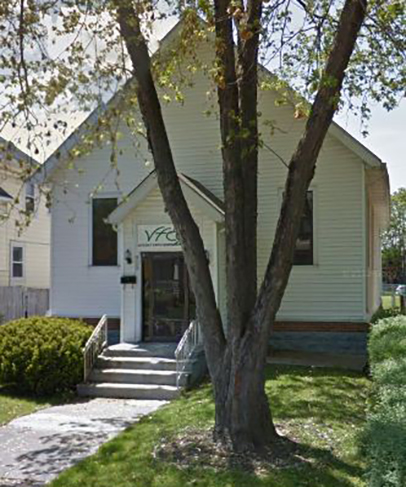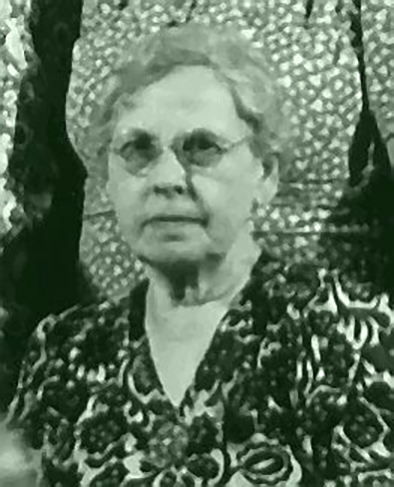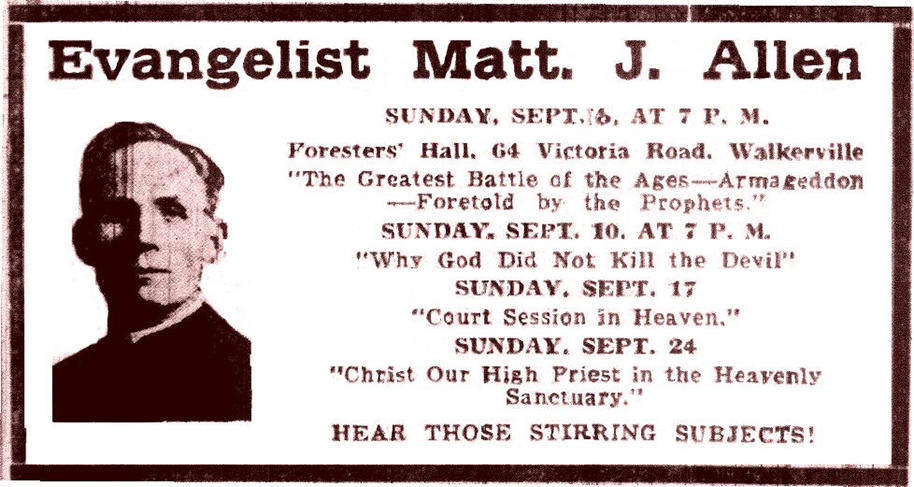The Early History of the Windsor Seventh-day Adventist Church
In the late 1800’s, the Seventh-day Adventist Church began to make inroads into the southernmost part of Ontario. Four Michigan evangelists were moving through Essex and Kent Counties, holding meetings wherever an opportunity presented itself. They were Oscar A Burrill, Eugene Leland, Peter M. Howe, and William Ward Simpson. In the year 1890, Mrs. John (Emily) Smith of Ruscom Station became the first Adventist in Essex county, and in 1892, the first Adventist-built church in Ontario was constructed in the village of Albuna, through the work of Burrill and Howe, just north of present-day Leamington. It was also the 2nd church built by Adventists in all of Canada. Read More
As early as 1902, there were colporteurs working in Windsor. At that time, there was only one church in Detroit, known as the First Detroit Mission, or the Trumbull Avenue Church. By 1910, the handful of Sabbath-keepers living in Windsor were attending this church, including Mrs. Frances Leatherdale nee Capman, who had recently moved here from Chatham.
Also attending the Trumbull church was a Michigan colporteur by the name of Charles Countryman. In 1910, Frances asked Mr. Countryman to spend some time in Windsor, and he agreed to work here one day each week. One of his first interests was David Geauvreau, who was the chief engineer at Windsor’s electrical power plant. This was long before there were any transmission lines from Niagara Falls, and the steam-powered plant supplied electricity not only for the downtown lights, but also for Windsor’s electric streetcars. Mr. Geauvreau purchased the book “The Coming King” from Mr. Countryman, and in short time accepted the Adventist message. David would become one of the charter members, and would play a significant leadership role in the early years of the church.
By 1916, Frances felt that there were sufficient numbers (12 potential members) to begin a church in Windsor, and so she contacted her brother, Joseph Capman, who was Field Secretary for the Ontario Conference, in order that he might search for an evangelist. Joseph and his family were good friends with a pastor/evangelist Matt Allen, who was currently working in Toronto, and who had just raised up a church of over 50 members. Matt agreed to come to Windsor in the summer of 1916.
Matt and his wife Jennie arrived in Windsor by train on July 18 of 1916. He would meet two others in Windsor who were to assist him in organizing a 2 month long evangelism series, and he brought with him several large trunks of materials, one of which contained a large tent for the series. He and his assistants searched for three full days, and inquired about 11 different sites, but found that all of the owners were opposed to the Adventist message, and refused to rent their properties at any price. They eventually found the Lincoln Road Methodist Church, who’s pastor was willing to rent out part of the church for the Sunday night meetings. Two weeks into the meetings, however, they were informed that a new church was being built on the site, and demolition work was to begin immediately. That Sunday evening, in their final meeting at that location, the building caught fire due to the demolition work, but the attendees were determined to finish their meeting, and the fire did not reach their area till the meeting was completed.
God was overseeing the work, however, and by an amazing turn of events, Matt was able to find a new location for the meetings by the very next morning, called Forester’s Hall. He also found a “Sons of England” hall on Wyandotte Street downtown, which he was able to rent for Sabbath worship services. This hall would end up being the church home for the next 5 years. On Oct. 21, 1916, A.V. Olsen, President of the Ontario Conference, came to Windsor and officially organized a new church of 20 members, 8 of whom were new converts from Matt Allen’s series.
Four years later, a Miss Rich, who was leaving to return to her home in Kentucky, donated her Windsor house and furniture to the church. Once sold, Pastor Widgery used the funds to purchase another small cottage home which was more centrally located in the city, and the members renovated it for use as a church. At the end of 1929, the members purchased a new church building on Moy Avenue, where they would stay for the next 40 years.
In the 1930’s, with the Great Depression raging, Windsor had no pastor for most of the decade, and the head elder, David Geauvreau rose to the task of keeping the small church growing. He gave Bible studies almost every night, and held his own evangelism series at least once per year. During these years, his efforts resulted in between 80 to 100 individuals joining the church.
In succeeding years, many others would dedicate their lives to God’s work, and we, today, are the beneficiaries of their labours. Through those times, the young church would face many difficulties, but they came through the periods of trial because their faith was great, that God was leading.
History Gallery
Notable Buildings and Pioneers

